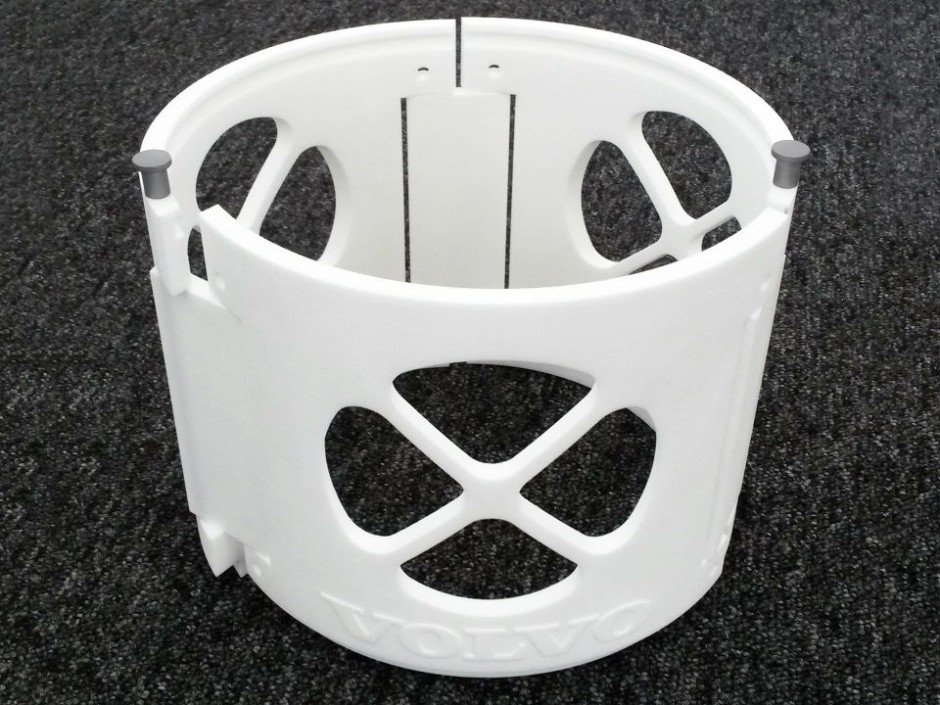The North American branch of car manufacturer Volvo Trucks has 3D printed 500 manufacturing tools and fixtures, including a one-piece diffuser used in the paint atomizer cleaning process.
Incorporating Selective Laser Sintering (SLS) technology, Volvo’s New River Valley (NRV) plant in Virginia, where all trucks for the North American market are produced, has enabled quicker production and continuous quality improvements in its automotive parts.
“Volvo Trucks began exploring the use of 3D technology with a prototype approach, identifying opportunities to improve quality in the manufacturing process,” said Franky Marchand, vice president and general manager of the NRV plant.
“Several years later, we can now say that 3D printing has become an integral component to our manufacturing processes and culture at NRV.”
Volvo Trucks’ 3D printing strategy
As early as 2015, Volvo Trucks has adopted Stratasys’ 3D printing systems at its engine production facility in Lyon, France. The turnaround times of assembly line manufacturing tools dropped dramatically, quoting a 94% decrease. Last year, Volvo Trucks has joined a 3D printing production partnership with SLM solutions to reduce the time to market of new products.
Adam Crowder, manager of Advanced Manufacturing Technology at NRV, is leading a global manufacturing-focused network representing 12 Volvo Trucks’ plants worldwide. Together, these Volvo Truck manufacturing bases are collaborating to develop new 3D printing applications and techniques for improved manufacturing.

SLS in Volvo Trucks
Volvo Trucks use SLS in its manufacturing process which allows engineers to design and produce parts in a matter of hours during a working day or overnight. Compared to traditional tooling methods, this cuts down the number of hours spent building parts significantly. This also eliminates the wait for new parts from vendors as the parts additively manufactured in-house.
Moreover, additive manufacturing has improved the quality and precision of Volvo’s products. by eliminating error in production, and streamlining the manufacturing process. This increases the chances of the first time through (FTT) production of assembly tools and fixtures. For the plant, FTT would eliminate the space needed to house traditionally produced tools and reduce inventory expenses.
After years of internal exploration with 3D printing and fine-tuning, the NRV shop floor now offers more than 500 3D printed manufacturing tools and fixtures. All of these parts were printed at the Volvo Innovative Projects lab at the Dublin facility.

Additive manufacturing tools and fixtures
Recently, Volvo Truck has used 3D printing to develop a one-piece diffuser used in the paint atomizer cleaning process. Other than saving the company more than $1,000 per part, 3D printing has also eliminated the need for a multiple piece component. Thinking ahead, the Volvo team has also produced spare parts for the twenty diffusers created. Should wear occur, diffusers can be easily and quickly replaced.
Other examples of 3D printed parts in use at Volvo Trucks include roof seal gauges, fuse installation platens, drilling fixtures, brake piston gauges, vacuum drill ducts, brake valve fitting gauges, hood drilling fixtures, power steering adapter holders, luggage door gap gauges and luggage door pins. Crowder concluded:
“While the technology has only been in use for a handful of years, it is already proving to be a valuable component of the manufacturing process at NRV, significantly saving production time and parts costs and continually improving quality.”
Subscribe to the 3D Printing Industry newsletter for the latest news in additive manufacturing. You can also stay connected by following us on Twitter and liking us on Facebook.
Looking for a career in additive manufacturing? Visit 3D Printing Jobs for a selection of roles in the industry.



